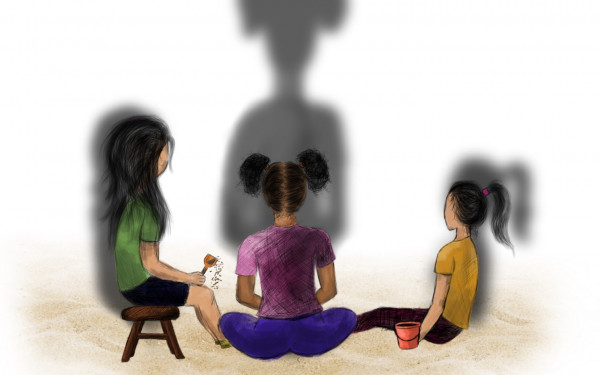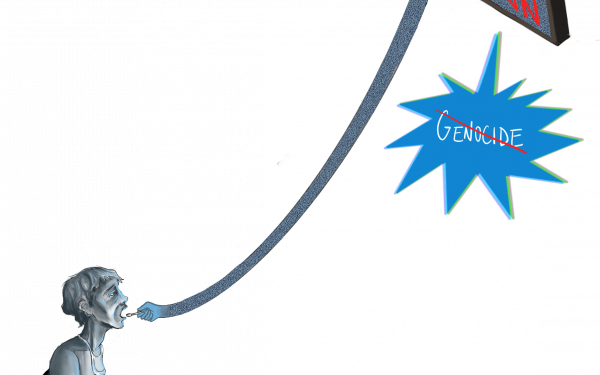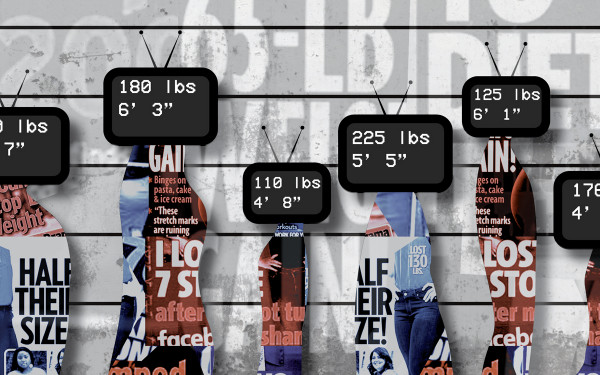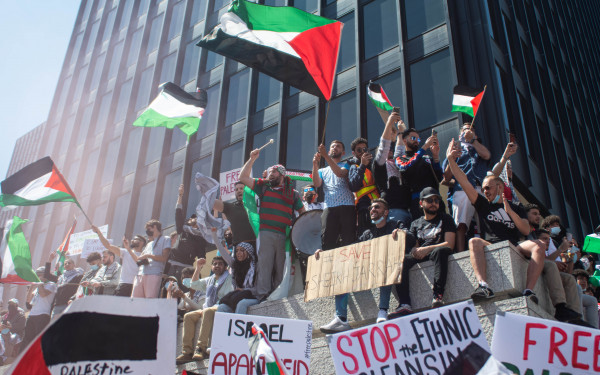“Plight through art”: How a Palestinian artist reclaims her heritage
Montreal-based artist Najat El-Taji El-Khairy on preserving and adapting traditional Palestinian embroidery
In her kitchen, Najat El-Taji El-Khairy stirs a hot apple and lemon cider on her stovetop. On her hand is a ring with the cross-stitch pattern of the flower of Ramla—her hometown in Palestine.
She wears it, along with a pendant with a similar shape, to keep her homeland close to her. She strains the liquid into two teacups and sits on an armchair next to a cushion she cross-stitched in 1986, embroidered with several Palestinian flowers originating from different cities. They all stand side by side, tightly interwoven and connected by colour and history. The pink and blue threads complement each other, and she looks at it proudly, saying she hopes it will be passed on to future generations in her family.
Born in Egypt in the year of the Nakba, in 1948, El-Taji El-Khairy has made it her life’s work to advocate for the liberation of her people. The first time she heard the word “Nakba,” the event marking the violent displacement of roughly 750,000 Palestinians for the creation of the Israeli state, was when her family was discussing her birth year. She had no idea what it meant; it was a bad word, she recounts, one to avoid. It wasn’t until she grew up that she understood its meaning and relation to preserving her heritage.
“I [clung] to Palestinian art,” El-Taji El-Khairy said. She described a cloth runner her mother had for the table, made with traditional Palestinian embroidery—tatreez fallahi—from Ramallah.
“When I asked who had made this, she said it was one of the village women,” she recounted. “I wondered what became of that woman and I really felt sad.”
She learned more about embroidery by watching women in her family work. She decided, however, that for her own art, she wanted a medium with more longevity, as a symbol of Palestinian resistance.
Tatreez—the Arabic word for embroidery—is a common practice in Palestine that dates back to the Canaanite era in the Southern Levant. It is most commonly used on clothing to decorate and express cultural heritage. Palestinian thobes―long-sleeved, flowy, ankle-length traditional garments, are embroidered using elements and colours depending on geographic location, occasion and social status. They are usually black or white, and incorporate an intricate chest panel that extends to the bottom of the garment. Thobes often include a belt that is designed with the same motifs.
Mostly developed in Palestinian rural areas with motifs and patterns belonging to different regions and traditions, Palestinian cross-stitch embroidery has evolved to represent Palestinians’ attachment to and ownership of their land and history. As of 2021, the art form has been added to UNESCO’s Representative List of the Intangible Cultural Heritage of Humanity.
After moving to Montreal from Riyadh in 1988, El-Taji El-Khairy developed her own unique art practice thanks to a Hungarian master who taught her how to paint on porcelain tiles. She was trained with classical European techniques—typically focused on flora—but she found that her heart wasn’t entirely in it. Wanting to give a more personal touch to her art and bring visibility to an issue important to her, she incorporated Palestinian cross-stitch symbols and colours into her paintings.
“It was a success,” El-Taji El-Khairy said. “I want the embroidery to survive no matter what, no matter where we are, no matter where we go. I left the flower art, and I thought, ‘This is why I was born.’”
Having found her purpose, she copyrighted her invention—Palestinian cross-stitch motifs painted on porcelain tiles—and committed to advocacy-centered art. She focused on conveying a message and fighting for a free Palestine. She says the copyright affirms Palestinian ownership of a Palestinian art form. In a time when her people are being uprooted and her culture is being eradicated, she can provide documented proof of the origin of her work.
Both she and her husband, Mazen El-Khairy, believe in the power of art to reinforce a cause and move people.
“Empires rise and empires fall,” said Mazen El-Khairy. “Art thrives even during catastrophes. Art is a sign of duration and value.”
For this reason, the olive tree has become a recurring symbol in El-Taji El-Khairy’s work. Palestinian olive trees are among the oldest trees on earth, symbolizing Palestinian identity, with their roots representing generational ownership of the land. Their meaning in relation to Palestinian people is something that has led her to include them in several of her pieces—in both joyful circumstances and other, darker ones. She puts her cider cup aside and walks around her apartment, looking at the pieces she has hung on her walls.
One of her favourite tiles is inspired by Lebanese writer Khalil Gibran’s Les esprits rebelles. It depicts olive trees uprooted by the Israeli occupation, with one in the middle still standing strong.
“The spirits of the dead olive trees are coming to defy the uprooting of their sister,” El-Taji El-Khairy said.
She proceeds to point out a few of her other signature symbols on the tile. Her finger hovers over the Bethlehem stars with their blue lozenges arranged in a circular pattern, the orange and brown mountains of Jerusalem in the background, the green and yellow palm trees in a zigzag pattern, the red grape motif, and the map of Palestine hidden in the standing tree’s roots. She says they are there to remind her audience that this issue concerns Palestine in its entirety.
El-Taji El-Khairy strongly believes in the importance of the representation of Palestinian joy to counter the dehumanization seen in the media, and she doesn’t see how she can separate her art from politics.
“You cannot talk Palestine without talking politics,” she stated. “We have been robbed [of] our culture, and our culture is something that talks about us.”
She quickly learned that people knew little about her country and became determined to oppose its erasure. She found that it was easier to attract an audience by displaying the beauty of her country and then educating them about the meaning of her subject matter.
Dr. Raouf Ayas, who has known El-Taji El-Khairy for over 30 years, says her art has had an impact on him and the community. It is a reason why he invited her to participate in a roundtable in February to give her perspective on the war on Gaza. He believes there are different ways to spread awareness and fight for a cause, and including art in the debate is one of them.
“Everyone expresses themselves differently,” he said. “[The roundtable] is our way to express ourselves and to think. Some people protest every week, but it is not our style. With this event, we could sit and listen to five Palestinian women’s truths and learn from their stories and individual expertise.”
One issue important to El-Taji El-Khairy is Arab complicity in Palestine’s occupation. She and her husband mention how some governments are openly normalizing the Israeli state and negotiating with its leadership, like Jordan’s trade deals which exported $566 million to Israel in 2022, or the now-paused Saudi Arabia-Israel dialogue. But she says complicity also occurs on a more personal level.
A year or so after she started selling mugs and other items with her copyrighted cross-stitch painting technique on her website, she discovered places in Dubai that sold mass-produced mug sets copying her style without permission. Though she says it is not a direct imitation of her work, she believes the designs were similar enough that they were based on her art.
But El-Taji El-Khairy says she doesn’t really mind, as it still serves to promote Palestinian identity and culture.
“Any ideas are always prone to be imitated and stolen,” she said. “Even designers of haute couture have the guts to do it. They still steal our Palestinian embroidery and claim [it as] their own. I do my best to reclaim [it]. This is the ultimate purpose of my idea or invention.”
The cider has gone cold. El-Taji El-Khairy studies the embroidered porcelain she has dedicated her life to—her and her people’s “plight through art.” Just like the 1986 cushion, they are her legacy, her contribution to the world. She hopes they will be passed down to her descendants, never forgotten, until they see a free Palestine.
This article originally appeared in Volume 45, Issue 1, published September 3, 2024.







